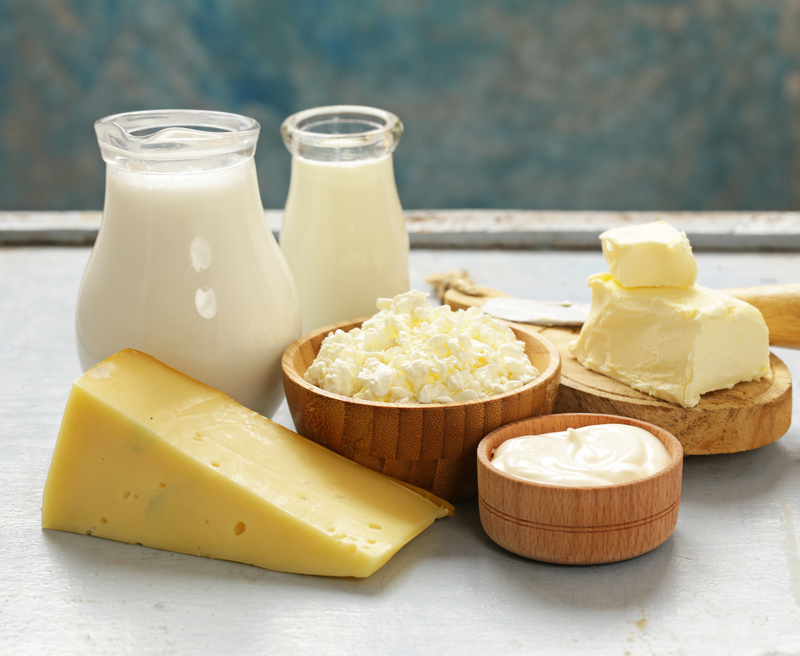Build a Healthy Gut for a Longer Life
Guest Post by Robert Choat, PhD.
I recall a statement made years ago, “We are what we eat.” This was interesting for me to hear, and it got me thinking regarding what we eat and our lifespan. When I think about the typical American diet, it’s no wonder the United States has one of the lowest lifespans of the first world countries and the lowest of all English-speaking countries (source: https://www.worldometers.info/demographics/life-expectancy/).
Research from UC Davis in February 2021 showed that having a diverse gut microbiome was directly related to a longer and heathier life. In the study, those that aged better tended to have an increased uniqueness in their microbiota. Previous studies have also shown a link between our gut health and our longevity.
What Constitutes a Healthy Gut Microbiome?
First, having a diversity of the right gut bacteria and a gut that changes over time. This meaning, becoming more diversified. In today’s modern world, our gut microbiota is not like it used to be. While the average lifespan has increased quite a bit, it’s mainly due to factors such as better medicine, a better sewage system, less starvation, and the like. Those factors don’t account for certain people that live a long and healthy life, especially the supercentenarians (those over 110).
Humans have approximately 10 trillion bacteria in the gut microbiome, which is about the same as the cells in our body. They are an important factor in our overall health and well-being. This includes our mental well-being. There are an estimated 5,000 different types of microbiotas in our gut. In fact, some studies have recognized that the gut microbiome as being a separate organ (with its own immune system and metabolic activity (Ferranti, et. al, 2014).
There is certain gut microbiota that could be bad in one sense yet is needed as part of an overall healthy gut. This includes E. coli. (Which has been implicated in stomach ulcers).
Prebiotic Fiber to Help Build a Healthier Gut
Prebiotic fiber are carbs that your body can’t digest and are an important source of food for your gut’s microbiome. If you’re not eating enough prebiotic fiber, then your healthy microbiota will start to die out due to zero nutrients to keep them going. Like any organism, we all need food to fuel us, and microbes are the same.
What are some sources of prebiotic fibers?
Inulin is one of the key sources of prebiotic fiber. I would suggest that you look at these foods to add to your diet:
-
Chicory Root. These are part of the dandelion family and helps to promote good bowel function. It’s also good in raising levels of adiponectin (a protein that control blood glucose levels).
-
Dandelion Greens. A big part the fiber content comes from inulin. Back in the old days I used to get rid of dandelions from my yard as they are considered weeds. Now I keep them as they show a much healthier yard versus the plush green lawns.
-
Jerusalem Artichokes. These plants are part of the sunflower family and contain a high amount of inulin. They are not the same as the artichokes you see in the store. They are high in thiamine (vitamin B1).
-
Garlic. These herbs are shown to help the growth of the highly beneficial Bifidobacteria. You’re probably already aware of the many benefits of eating garlic.
-
Onions. Beside being rich in inulin (like garlic) it’s also high in FOS. FOS helps to strengthen your gut flora, providing a richer environment. It also helps to strengthen the immune system.
-
Leeks. They are part of the onion family and contain inulin. They also have Vitamin K.
-
Asparagus. These everyday veggies have a decent amount of inulin and offer other health benefits.
-
Bananas. They have a small amount of inulin and green bananas also have a high amount of resistant starch (which offers prebiotic effects).
-
Burdock Root. Common in Japan (my mother’s home country), they are rich in inulin and FOS.
-
Yacon Root. Another source of inulin and FOS.
-
Jimaca Root. A source of inulin.
Other types of prebiotic fibers come from these foods:
-
Barley. Barley contains Beta-Glucan which helps with the digestive system as well as improving blood cholesterol levels. It’s also rich in selenium.
-
Oats. Like barley, it contains high amounts of beta-glucan.
-
Apples. Contains pectin which may help in promoting a healthier gut.
-
Cocoa. I love dark chocolate (above 70% and organic). The polyphenols help to grow healthy gut bacteria.
-
Flaxseeds. These amazing seeds are very healthy and help with promoting a healthier gut.
-
Wheat Bran. This food has a type of prebiotic fiber called arabinoxylan oligosaccharides (AXOS). Not only does it help to boost healthy gut bacteria, such as bifidobacteria, and it also helps with digestive issues.
-
Seaweed. While more research is needed in the benefits to humans, seaweed had a high amount of soluble fiber. I’ve been eating seaweed since I was a young child (the benefits of having a Japanese mother). Yes, I ate sushi way before it was a thing in the West.
People have asked me about taking probiotic supplements. The issue is that there are no standards. The best companies have 3rd party testing and are guaranteed. The research is out regarding their effectiveness. Companies that do not offer these, are considered poor quality. My good friend, Dr. Lori Shemek, PhD, CNC has better answers in this regard.

I will recommend food sources of probiotics as they are proven to work and have a large history. These fermented foods should be a part of your overall diet.
-
Yogurt. This food source is full of healthy bacteria including bifidobacteria. I will suggest that you stay with plain yogurt as opposed to the yogurts you see with added sugar fruits. You can add fruit and even mix in ground flax (which I do). Make sure to consume yogurt that has live cultures (as the bacteria in many yogurts have been killed during processing).
-
Kefir. I love this drink. It’s also a diverse source of probiotics and in that way, it’s better than yogurt.
-
Sauerkraut. This food source made from fermenting cabbage can be stored for months in an airtight container. Not only does it contain a healthy number of probiotics, and it has a rich amount of fiber. It’s an easy food that you can learn to make it yourself. Additionally, it’s rich in minerals, vitamins, and antioxidants.
-
Tempeh. This fermented soybean is also a high protein food. Originally from Indonesia, it’s a substitute for those that are looking for a protein alternative.
-
Kimchi. This food comes from South Korea and is a staple there. While cabbage is the typical ingredient, other types of veggies have been used. Many families in South Korea make it at home and like sauerkraut, it’s easy to make. Kimchi is usually very spicy. I have tried both the spicy and mild versions and love them both. Garlic is also mixed with it (you get the inulin factor added).
-
Miso. This popular Japanese dish is made by fermenting soybeans and fungi called koji. Besides the probiotic factor, it’s full of minerals and vitamins.
-
Kombucha. This is a fermented black or green tea.
-
Pickles. Like the fermentation of cabbage into sauerkraut, pickles have a high number of probiotics as well as vitamins and minerals. Be mindful that they are also high in salt. Avoid the typical pickle that are not fermented and instead, uses vinegar.
-
Traditional Buttermilk. This buttermilk is the leftover liquid from the churning done to make butter. Also known as “Grandma’s Probiotic.” Cultured buttermilk does not contain the probiotic benefits.
-
Natto. I grew up eating natto on top of the rice my mother served. It’s a sticky, fermented soybean. It has a high amount of vitamin k2, excellent for bone and cardiovascular health.
-
Some cheeses. Look on the label to see if there are live cultures. Gouda cheese is one source.
If you’re buying these food sources of probiotics, always look at the label and make sure they have live cultures. There are YouTube videos on how to make many of them at home.
Now is the time to take control of your health and live a longer life through the combination of prebiotic and probiotic foods.





